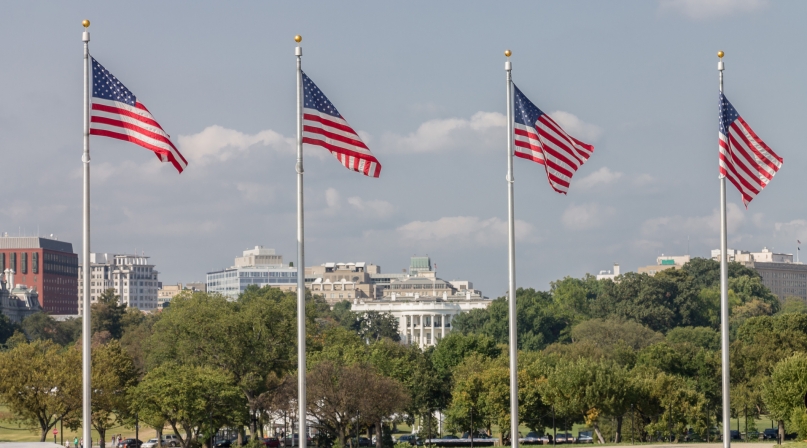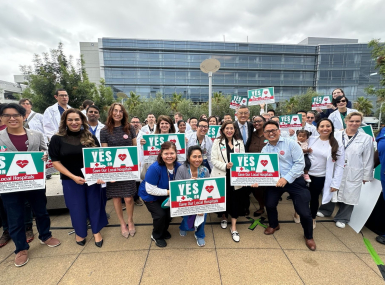White House Executive Order shifts federal approach to homelessness, mental illness and public safety
Author

Eryn Hurley

Blaire Bryant

Brett Mattson
Upcoming Events
Related News

JULY 29, 2025 UPDATE: On July 29, the Substance Abuse and Mental Health Services Administration (SAMHSA) sent a letter to states clarifying implementation of the White House Executive Order on Ending Crime and Disorder by outlining how federal funds for substance use programs may be used. It reaffirms support for evidence-based, life-saving tools such as naloxone, test kits, and HIV/hepatitis prevention, while prohibiting funding for supplies that "facilitate drug use" such as syringes or smoking kits. The guidance emphasizes a shift toward prevention, treatment, recovery, and community safety in alignment with the Administration’s directive.
On July 24, the White House issued an Executive Order (EO) directing federal agencies to prioritize civil commitment, public safety and treatment-based interventions in addressing homelessness and related challenges. The order calls for changes across key grant programs and policy areas impacting counties.
About the Executive Order
The order directs the Departments of Justice (DOJ), Health and Human Services (HHS), Housing and Urban Development (HUD) and Transportation (DOT) to:
- Support civil commitment and institutional treatment for individuals with serious mental illness or substance use disorder who are unsheltered and unable to care for themselves
- Prioritize grants to jurisdictions that enforce laws against open drug use, unauthorized camping and squatting
- Restrict funding for harm-reduction programs like safe consumption sites
- Increase grantee accountability in homelessness programs, including requirements for treatment participation and public safety outcomes
- Allow or require programs to collect health data and, where allowed by law, share it with law enforcement
What does this mean for counties?
Federal Funding to Address Mental Health Treatment Bed Shortages
Counties across the nation are facing pressure to reduce unsheltered release of individuals with acute behavioral health needs. Now county facilities experiencing capacity issues can access additional federal dollars to expand or secure additional mental health treatment beds in an effort to avoid releasing individuals purely for the lack of available treatment space
Restrictions on the Use of Federal Funding for Harm Reduction
Counties will no longer be permitted to use discretionary funds from the Substance Abuse and Mental Health Services Administration (SAMHSA) for certain harm reduction services, that facilitate drug use like syringes or smoking kits.
New Crisis Intervention Funding for FQHCs and CCBHCs
The Order expands federal funding to Federally Qualified Health Centers (FQHCs) and Certified Community Behavioral Health Clinics (CCBHCs) to deliver crisis intervention and response services. Counties will likely see increased grant opportunities to invest in rapid-response mental health care within these community-based settings, addressing crises before they escalate.
Federal Support for Drug Courts & Jail Diversion
The Order promotes the expansion of drug courts as part of broader jail diversion efforts. Federal resources may be directed to establish or scale these specialty courts at the county level, helping eligible individuals access treatment and services instead of traditional incarceration.
Emergency Law Enforcement Funds
DOJ is directed to make emergency funds available to support encampment removals in areas where public safety is at risk and local resources are limited. Counties may be eligible based on need and compliance.
New Program Requirements
Counties administering HUD homelessness programs may need to adjust for new conditions, including:
- Requirements for treatment participation for individuals with mental illness or substance use disorders
- Limits on housing options for certain populations, including sex offenders
- Potential restrictions on programs operating safe consumption sites
Data and Privacy Considerations
The order allows HUD to require health data collection from program participants and share it with law enforcement, where permitted by law. Counties will need to weigh these requirements against privacy regulations and operational practices.
Next Steps for Counties
- Watch for agency guidance and rulemaking from DOJ, HUD and HHS
- Assess local enforcement and behavioral health capacity in light of potential funding opportunities or limitations
- Coordinate across departments and stakeholders to prepare for changes in eligibility, data requirements and service delivery
- Monitor legal developments, especially around civil commitment and consent decrees that may affect local programs
This EO marks a federal shift in how homelessness and mental illness are addressed, with an emphasis on civil commitment, public safety and treatment. Counties may see new funding opportunities and program changes, but also face operational and legal considerations. NACo will continue tracking these developments and their impact on county governments.
Related News

CMS issues new guidance on Medicaid Community Engagement Requirements
On December 8, the Centers for Medicare & Medicaid Services (CMS) released a Medicaid and CHIP Services Informational Bulletin (CIB) directing states on how to implement the Medicaid community engagement requirements enacted under Section 71119 of the One Big Beautiful Bill Act legislation (Public Law 119-21), or H.R. 1.

California county sales tax measure backfills federal healthcare cuts
Santa Clara County, Calif. will raise an estimated $330 million each year from a sales tax to backfill lose Medicaid funding.
Resource
The Big Shift: An Analysis of the Local Cost of Federal Cuts

